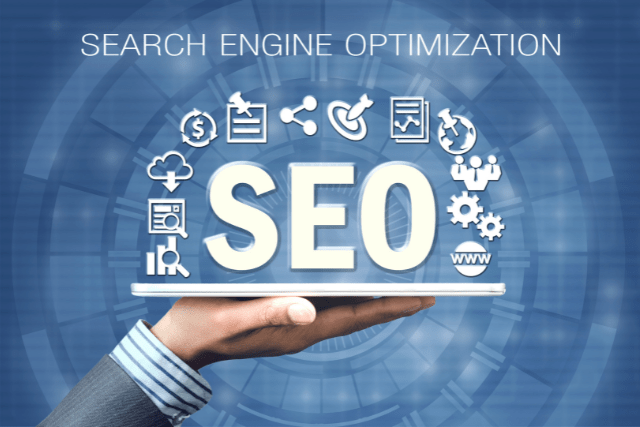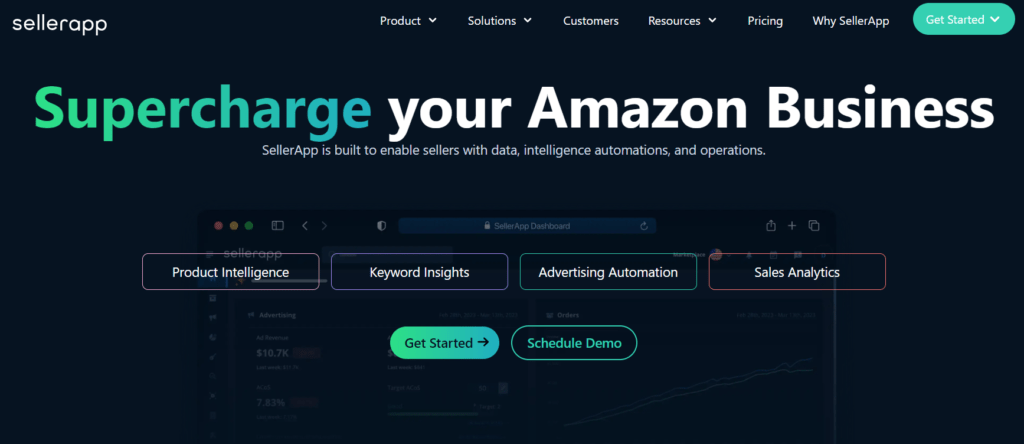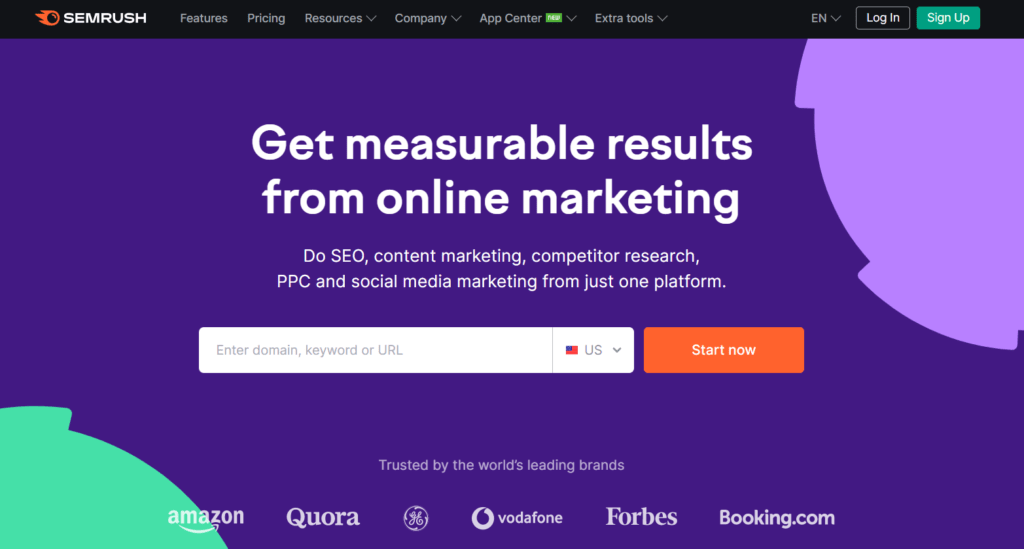Ecommerce businesses have two main options for driving traffic and sales on Amazon – pay-per-click (PPC) advertising and organic search engine optimization (SEO).
Both have merits and limitations, so it’s important to understand the key differences between these strategies to determine which approach (or combination) is right for your business.
In this article, we will compare Amazon PPC and organic SEO in depth so you can boost sales more effectively.
Key Takeaways
- PPC ads drive instant sales. Launch campaigns to get immediate traffic and revenue. SEO takes months to build organic rankings before sales volumes grow.
- In the long term, SEO substantially cuts costs and earns more sustainable revenue. Mature SEO gains momentum to outperform PPC ultimately.
- Smart brands use both PPC and SEO. PPC accelerates short-term sales. SEO enables high organic growth later.
- Align strategies with goals. PPC meets urgent sales targets fast. SEO supports long-term domination through expertise. Invest in both proportionately.
What is Amazon PPC?
Amazon PPC (pay-per-click) ads appear at the top of search results and product pages as “Sponsored” listings. You bid for keywords and pay when shoppers click on your ads. The higher you bid, the more likely your product will be prominently displayed to shoppers.
PPC aims to earn clicks and drive awareness through brand exposure. Amazon’s huge audience (over 197 million monthly visitors) makes their PPC platform enticing for e-commerce brands wanting quick returns on ad spending.
Benefits of Amazon PPC Advertising
Immediate Exposure: PPC ads enable you to instantly get your products in front of interested customers. You don’t have to wait for rankings.
Trackable Results: You can track clicks, ad spend, sales, etc. So it’s easy to calculate your return on investment.
Flexible Budgets: You can invest as much or as little as you like with complete control over daily campaign budgets.
Brand Exposure: Appearing as a “Sponsored” result builds brand visibility – PPC puts your product listings in front of more searching customers.
Rapid Campaign Optimization: Amazon’s data-driven platform lets you continuously fine-tune campaigns based on keyword/audience performance. You can avoid overspending on PPC ads with the help of negative keywords.
What is Organic SEO?
In contrast, SEO (search engine optimization) focuses on long-term rankings so your product listings appear in the main organic search results for relevant buyer keywords.
SEO aims to boost authority signals so Amazon’s algorithm ranks your product listing higher than competitors when shoppers search over time.
Rather than paying for clicks, organic SEO generates “free” sales driven by your main product listings appearing prominently in search results due to authority and relevance. SEO-driven sales volume can surpass PPC ads over longer periods.
Benefits of Organic SEO
Long-term Growth: SEO is an investment for gradual but steady organic rankings and sales rises. Results compound over time.
Higher Conversion Rates: Shoppers clicking organic results often have firmer buying intent, so conversion rates are higher than paid clicks.
Brand Trust: Organic visibility signals legitimacy – appearing prominently for buyers’ searches fosters brand trust more than ads.
Sustainable Sales: When you earn high rankings, sales can still flow through your product listings even if you pause all paid ad campaigns.
Lower Cost Per Acquisition (CPA): As organic clicks convert at higher rates, your cost per purchase decreases – no ad cost with organic clicks means lower CPAs.
Which is Driving More Sales – PPC or SEO?
Now we’ve covered the basics, which strategy reigns supreme for boosting ecommerce sales – Amazon PPC ads or organic SEO?
Ultimately, sales volume results from the compound impact of traffic x conversion rate. More qualified visitors clicking through to product listings means more eyes on your offers. The conversion rate measures the sales closed as a percentage of that traffic.
Together, traffic and conversion rates indicate which approach drives more revenue. So, let’s analyze the sales potential of PPC ads vs SEO…
PPC Sales Volume Potential
Sponsored ads enable impressive traffic volumes quickly from Amazon’s huge buyer audience. Displaying prominently at the top of searches and product pages means many impressions and ad clicks. Though paid clicks typically convert at lower rates than organic traffic over time.
SEO Sales Volume Potential
Alternatively, good organic rankings earn high volumes of “free” clicks from prominently appearing in the main search results. What SEO traffic lacks in upfront volume, it often makes up for in higher converting visitors. Over long periods, targeted SEO traffic compounding with good conversion rates can ultimately drive more sales volume.
Most successful ecommerce brands combine PPC and SEO rather than choosing one strategy. PPC helps seize traffic demand immediately as you build organic rankings behind the scenes over 3-12 months. Integrating both strategies enables maximum sales growth.
Let’s compare the pros and cons of Amazon PPC ads vs SEO for boosting sales from different angles…
Short Term: PPC Advertising Wins
Amazon PPC campaigns switch on instantly to capture intent shoppers from day one. When you launch ads, your products get visibility from searches made that very second. In e-commerce, immediate exposure and sales matter – PPC enables this by paying to play.
SEO takes months to deliver results. First, you must overhaul brand signals and listing content to align with buyer needs. Only later will rankings build momentum to drive organic clicks and sales at scale over the long term.
So, in the short term, PPC advertising quickly capitalizes on demand. Winning when you need sales fast.
Long Term: Organic SEO Wins
Fast forward 12+ months, and SEO comes into its own – delivering more sustainable sales volume and lower cost per acquisition. Amazon PPC costs accumulate with every click, whereas SEO sales are essentially “free” once higher rankings are achieved.
Over long periods invested in SEO, organic clicks and conversion rates compound for high revenue volumes. PPC can’t match mature SEO efforts’ scalability or return on investment – where sales still flow even if campaigns pause.
So, for the long game, focus your effort on organic SEO.

Budgets: PPC Offers More Flexibility
PPC budgets scale up and down smoothly in Amazon’s advertising platform – invest more to accelerate sales or cut budgets to control costs. This flexibility enables responding quickly to changes in trading conditions or sales targets.
With SEO, you can’t suddenly “buy” more rankings. Expensive outsourcing rarely speeds up long-term content and authority building. The months-long timeline to improve organic results remains rigid.
So Amazon PPC wins for flexible budget control. You get out exactly what you put in financially with paid search investment.
Brand Building: SEO
While PPC ads drive brand exposure from prominent placements, nothing ultimately beats rankings high in organic search for branding and trust signals. A presence in the main body of search results (rather than small side ads) enhances authority.
Plus, SEO-driven content helps connect with buyer needs on deeper levels than product advertising alone. Building understanding between your brand and ideal customers. Content and authority combine to make organic SEO more impactful for brand building than paid search’s short-term visibility.
Best Tools for Managing Amazon PPC and SEO Campaigns
1. SellerApp
SellerApp SellerApp is an all-in-one suite enabling advertisers to manage large-scale product portfolios across the full range of campaign optimization activities. Core features include:
- Keyword Research – Discover new relevant search terms with accurate search volume data. Unearth product targeting opportunities.
- Campaign Manager – Quickly create, organize and optimize pay-per-click campaigns across products and groups. Automate bidding strategies.
- Rank Tracker – Track keyword ranks accurately with historical product and category rankings reporting. Identify areas to boost visibility.
- Product Tracker – The central product library connects advertising and SEO efforts, monitoring daily trends on metrics like BSR, reviews and sales for hundreds of items.
- Analytics & Reporting – Custom reporting around campaign performance, product tracking and advertising analytics to inform optimization decisions.
SellerApp consolidates critical PPC and SEO management capabilities so larger agencies and enterprise sellers can streamline workflows in one place.

2. SEMrush
SEMrush Recognized as an industry-leading toolkit, SEMrush offers robust capabilities to enterprises managing Amazon advertising and organic rankings, including:
- Rank Tracking – Accurate tracking of product rankings by keyword across Amazon search and category pages. Compare visibility against competitors.
- Listing Analysis – Review product SEO quality checking optimization opportunities on elements like titles, features, descriptions, images and back-end search settings.
- Keyword Research – Leverage exhaustive keyword data filtering by search volume, competition levels and other parameters to identify new PPC and SEO targets.
- Position Benchmarking – Evaluate product rankings versus competitors for your most important keywords to determine market visibility strengths and areas to catch up.
- Reporting – Flexible reporting around rank performance, campaign cost, clicks and advertising ROI.
With advanced functionality spanning opportunity identification, benchmarking/tracking, and analytics, SEMrush caters to mid-large agencies and top sellers.

Conclusion: Amazon PPC Vs Organic SEO
Amazon PPC and organic SEO both have unique roles in boosting ecommerce sales. PPC acts as the rapid response tactician – seizing traffic and sales opportunities immediately through promoted placements. SEO focuses on a longer-term strategy – earning organic rankings and compound growth, resulting in higher volumes over time.
Savvy ecommerce brands invest in both for maximum sales. PPC provides instant revenue as you build SEO-driven organic results for the future. At some point, SEO traffic and conversions can grow large enough to self-sustain sales, where paid ads become optional.
If starting today, focus on scaling Amazon PPC ads to capitalize on market demand immediately. Then, reinvest a portion of returns into elevating SEO. Over time, search visibility and sales will compound. Strike the right balance between paid and organic channels to boost profits.







